Gone Tomorrow jr-13 Read online
Gone Tomorrow
( Jack Reacher - 13 )
Lee Child
New York City. Two in the morning. A subway car heading uptown. Jack Reacher, plus five other passengers. Four are okay. The fifth isn’t.
In the next few tense seconds Reacher will make a choice-and trigger an electrifying chain of events in this gritty, gripping masterwork of suspense by #1 New York Times bestseller Lee Child.
Susan Mark was the fifth passenger. She had a lonely heart, an estranged son, and a big secret. Reacher, working with a woman cop and a host of shadowy feds, wants to know just how big a hole Susan Mark was in, how many lives had already been twisted before hers, and what danger is looming around him now.
Because a race has begun through the streets of Manhattan in a maze crowded with violent, skilled soldiers on all sides of a shadow war. Susan Mark’s plain little life was critical to dozens of others in Washington, California, Afghanistan… from a former Delta Force operator now running for the U.S. Senate, to a beautiful young woman with a fantastic story to tell-and to a host of others who have just one thing in common: They’re all lying to Reacher. A little. A lot. Or maybe just enough to get him killed.
In a novel that slams through one hairpin surprise after another, Lee Child unleashes a thriller that spans three decades and gnaws at the heart of America… and for Jack Reacher, a man who trusts no one and likes it that way, it’s a mystery with only one answer-the kind that comes when you finally get face-to-face and look your worst enemy in the eye.
Lee Child
Gone Tomorrow
ONE
Suicide bombers are easy to spot. They give out all kinds of tell-tale signs. Mostly because they’re nervous. By definition they’re all first-timers.
Israeli counterintelligence wrote the defensive playbook. They told us what to look for. They used pragmatic observation and psychological insight and came up with a list of behavioural indicators. I learned the list from an Israeli army captain twenty years ago. He swore by it. Therefore I swore by it too, because at the time I was on three weeks’ detached duty mostly about a yard from his shoulder, in Israel itself, in Jerusalem, on the West Bank, in the Lebanon, sometimes in Syria, sometimes in Jordan, in buses, in stores, on crowded sidewalks. I kept my eyes moving and my mind running free down the bullet points.
Twenty years later I still know the list. And my eyes still move. Pure habit. From another bunch of guys I learned another mantra: Look, don’t see, listen, don’t hear. The more you engage, the longer you survive.
The list is twelve points long if you’re looking at a male suspect. Eleven, if you’re looking at a woman. The difference is a fresh shave. Male bombers take off their beards. It helps them blend in. Makes them less suspicious. The result is paler skin on the lower half of the face. No recent exposure to the sun.
But I wasn’t interested in shaves.
I was working on the eleven-point list.
I was looking at a woman.
I was riding the subway, in New York City. The 6 train, the Lexington Avenue local, heading uptown, two o’clock in the morning. I had gotten on at Bleecker Street from the south end of the platform into a car that was empty except for five people. Subway cars feel small and intimate when they’re full. When they’re empty they feel vast and cavernous and lonely. At night their lights feel hotter and brighter, even though they’re the same lights they use in the day. They’re all the lights there are. I was sprawled on a two-person bench north of the end doors on the track side of the car. The other five passengers were all south of me on the long bench seats, in profile, side on, far from each other, staring blankly across the width of the car, three on the left and two on the right.
The car’s number was 7622. I once rode eight stops on the 6 train next to a crazy person who talked about the car we were in with the same kind of enthusiasm that most men reserve for sports or women. Therefore I knew that car number 7622 was an R142A model, the newest on the New York system, built by Kawasaki in Kobe, Japan, shipped over, trucked to the 207th Street yards, craned on to the tracks, towed down to 180th Street and tested. I knew it could run two hundred thousand miles without major attention. I knew its automated announcement system gave instructions in a man’s voice and information in a woman’s, which was claimed to be a coincidence but was really because the transportation chiefs believed such a division of labour was psychologically compelling. I knew the voices came from Bloomberg TV, but years before Mike became mayor. I knew there were six hundred R142As on the tracks and that each one was a fraction over fifty-one feet long and a little more than eight feet wide. I knew that the no-cab unit like we had been in then and I was in now had been designed to carry a maximum of forty people seated and up to 148 standing. The crazy person had been clear on all that data. I could see for myself that the car’s seats were blue plastic, the same shade as a late summer sky or a British air force uniform. I could see that its wall panels were moulded from graffiti-resistant fibreglass. I could see its twin strips of advertisements running away from me where the wall panels met the roof. I could see small cheerful posters touting television shows and language instruction and easy college degrees and major earning opportunities.
I could see a police notice advising me: If you see something, say something.
The nearest passenger to me was a Hispanic woman. She was across the car from me, on my left, forward of the first set of doors, all alone on a bench built for eight, well off centre. She was small, somewhere between thirty and fifty, and she looked very hot and very tired. She had a well-worn supermarket bag looped over her wrist and she was staring across at the empty place opposite with eyes too weary to be seeing much.
Next up was a man on the other side, maybe four feet farther down the car. He was all alone on his own eight-person bench. He could have been from the Balkans, or the Black Sea. Dark hair, lined skin. He was sinewy, worn down by work and weather. He had his feet planted and he was leaning forward with his elbows on his knees. Not asleep, but close to it. Suspended animation, marking time, rocking with the movements of the train. He was about fifty, dressed in clothes far too young for him. Baggy jeans that reached only his calves, and an oversized NBA shirt with a player’s name on it that I didn’t recognize.
Third up was a woman who might have been West African. She was on the left, south of the centre doors. Tired, inert, her black skin made dusty and grey by fatigue and the lights. She was wearing a colourful batik dress with a matching square of cloth tied over her hair. Her eyes were closed. I know New York reasonably well. I call myself a citizen of the world and New York the capital of the world, so I can make sense of the city in the same way that a Brit knows London or a Frenchman knows Paris. I’m familiar but not intimate with its habits. But it was an easy guess that any three people like these already seated on a late-night northbound 6 train south of Bleecker were office cleaners heading home from evening shifts around City Hall, or restaurant service workers from Chinatown or Little Italy. They were probably set for Hunts Point in the Bronx, or maybe all the way up to Pelham Bay, ready for short fitful sleeps before more long days.
The fourth and the fifth passengers were different.
The fifth was a man. He was maybe my age, wedged at forty-five degrees on the two-person bench diagonally opposite me, all the way across and down the length of the car. He was dressed casually but not cheaply. Chinos, and a golf shirt. He was awake. His eyes were fixed somewhere in front of him. Their focus changed and narrowed constantly, like lie was alert and speculating. They reminded me of a ballplayer’s eyes. They had a certain canny, calculating shrewdness in them.
But it was passenger number four that I was looking at.
If you see something, say something.
Not a perfect view, but good enough to ring every bell on the eleven-point list. The bullet headings lit tip like cherries on a Vegas machine.
According to Israeli counterintelligence I was looking at a suicide bomber.
TWO
I dismissed the thought immediately. Not because of racial profiling. White women are as capable of craziness as anyone else. I dismissed the thought because of tactical implausibility. The timing was wrong. The New York subway would make a fine target for a suicide bombing. The 6 train would be as good as any other and better than most. It stops under Grand Central Terminal. Eight in the morning, six at night, a crowded car, forty seated, 148 standing, wait until the doors open on packed platforms, push the button. A hundred dead, a couple of hundred grievously injured, panic, infrastructure damage, possibly fire, a major transportation hub shut down for days or weeks and maybe never really trusted again. A significant score, for people whose heads work in ways we can’t quite understand.
But not at two o’clock in the morning.
Not in a car holding just six people. Not when Grand Central’s subway platforms would hold only drifting trash and empty cups and a couple of old homeless guys on benches.
The train stopped at Astor Place. The doors hissed open. No one got on. No one got off. The doors thumped shut again and the motors whined and the train moved on.
The bullet points stayed lit up.
The first was the obvious no-brainer: inappropriate clothing. By now explosive belts are as evolved as baseball gloves. Take a three-foot by two-foot sheet of heavy canvas, fold once longitudinally, and you have a continuous pocket a foot deep. Wrap the pocket around the bomber, and sew it together in back. Zippers or snaps can lead to second thoughts. Insert a stockade of dynamite sticks into the pocket all the way around, wire them up, pack nails or ball bearings into the voids, sew the top seam shut, add crude shoulder straps to take the weight. Altogether effective, but altogether bulky. The only practical concealment, an oversized garment like a padded winter parka. Never appropriate in the Middle East, and plausible in New York maybe three months in twelve.
But this was September, and it was as hot as summer, and ten degrees hotter underground. I was wearing a T-shirt. Passenger number four was wearing a North Face down jacket, black, puffy, shiny, a little too large and zipped to her chin.
If you see something, say something
I took a pass on the second of the eleven points. Not immediately applicable. The second point is: a robotic walk. Significant at a checkpoint or in a crowded marketplace or outside a church or a mosque, but not relevant with a seated suspect on public transportation. Bombers walk robotically not because they’re overcome with ecstasy at the thought of imminent martyrdom, but because they’re carrying forty extra pounds of unaccustomed weight, which is biting into their shoulders through crude suspender straps, and because they’re drugged. Martyrdom’s appeal goes only so far. Most bombers are browbeaten simpletons with a slug of raw opium paste held between gum and cheek. We know this because dynamite belts explode with a characteristic doughnut-shaped pressure wave that rolls up the torso in a fraction of a nanosecond and lifts the head clean off the shoulders. The human head isn’t bolted on.
It just rests there by gravity, somewhat tied down by skin and muscles and tendons and ligaments, but those insubstantial biological anchors don’t do much against the force of a violent chemical explosion. My Israeli mentor told me the easiest way to determine that an open-air attack was caused by a suicide bomber rather than by a car bomb or a package bomb is to search on an eighty- or ninety-foot radius and look for a severed human head, which is likely to be strangely intact and undamaged, even down to the opium plug in the cheek.
The train stopped at Union Square. No one got on. No one got off. Hot air billowed in from the platform and fought the interior air conditioning. Then the doors closed again and the train moved on.
Points three through six are variations on a subjective theme: irritability, sweating, tics, and nervous behaviour. Although in my opinion sweating is as likely to be caused by physical overheating as by nerves. The inappropriate clothing, and the dynamite. Dynamite is wood pulp soaked with nitroglycerine and moulded into baton-sized sticks. Wood pulp is a good thermal insulator. So sweating comes with the territory. But the irritability and the tics and the nervous behaviour are valuable indicators. These people are in the last weird moments of their lives, anxious, scared of pain, woozy with narcotics. They are irrational by definition. Believing or half believing or not really believing at all in paradise and rivers of milk and honey and lush pastures and virgins, driven by ideological pressures or by the expectations of their peers and their families, suddenly in too deep and unable to back out. Brave talk in clandestine meetings is one thing. Action is another. Hence suppressed panic, with all its visible signs.
Passenger number four was showing them all. She looked exactly like a woman heading for the end of her life, as surely and certainly as the train was heading for the end of the line.
Therefore point seven: breathing.
She was panting, low and controlled. In, out, in, out. Like a technique to conquer the pain of childbirth, or like the result of a ghastly shock, or like a last desperate barrier against screaming with dread and fear and terror.
In, out, in, out.
Point eight: suicide bombers about to go into action stare rigidly ahead. No one knows why, but video evidence and surviving eyewitnesses have been entirely consistent in their reports. Bombers stare straight ahead. Perhaps they have screwed their commitment up to the sticking point and fear intervention. Perhaps like dogs and children they feel that if they’re not seeing anyone, then no one is seeing them. Perhaps a last shred of conscience means they can’t look at the people they’re about to destroy. No one knows why, but they all do it.
Passenger number four was doing it. That was for sure. She was staring across at the blank window opposite so hard she was almost burning a hole in the glass.
Points one through eight, check. I shifted my weight forward in my seat.
Then I stopped. The idea was tactically absurd. The time was wrong.
Then I looked again. And moved again. Because points nine, ten, and eleven were all present and correct too, and they were the most important points of all.
THREE
Point nine: mumbled prayers. To date all known attacks have been inspired, or motivated, or validated, or invigilated by religion, almost exclusively the Islamic religion, and Islamic people are accustomed to praying in public. Surviving eyewitnesses report long formulaic incantations run through and repeated endlessly and more or less inaudibly, but with visibly moving lips. Passenger number four was really going at it. Her lips were moving below her fixed stare, in a long, panting, ritualistic recitation that seemed to repeat itself every twenty seconds or so. Maybe she was already introducing herself to whatever deity she expected to meet on the other side of the line. Maybe she was trying to convince herself that there really was a deity, and a line.
The train stopped at 23rd Street. The doors opened. No one got off. No one got on. I saw the red exit signs above the platform: 22nd and Park, northeast corner, or 23rd and Park, southeast corner. Unremarkable lengths of Manhattan sidewalk, but suddenly attractive.
I stayed in my seat. The doors closed. The train moved on.
Point ten: a large bag.
Dynamite is a stable explosive, a
s long as it’s fresh. It doesn’t go off by accident. It needs to be triggered by blasting caps. Blasting caps are wired with detonator cord to an electricity supply and a switch. The big plungers in old western movies were both things together. The first part of the handle’s travel spun up a dynamo, like a field telephone, and then a switch was tripped. Not practical for portable use. For portable use you need a battery, and for a linear yard of explosive you need some volts and amps. Tiny AA cells put out a weak volt and a half. Not enough, according to prevailing rules of thumb. A nine-volt battery is better, and for a decent kick you want one of the big square soup-can size cells sold for serious flashlights. Too big and too heavy for a pocket, hence the bag. The battery nestles in the bottom of the bag, wires come off it to the switch, then they head on out through an unobtrusive slit in the back of the bag, and then they loop up under the hem of the inappropriate garment.
Passenger number four was wearing a black canvas messenger bag, urban style, looped in front of one shoulder and behind the other, and hauled around into her lap. The way the stiff fabric bulged and sagged made it look empty apart from a single heavy item.
The train stopped at 28th Street. The doors opened. No one got on. No one got off. The doors closed and the train moved on.
Point eleven: hands in the bag.
Twenty years ago point eleven was a recent addition. Previously the list had ended at point ten. But things evolve. Action, and then reaction. Israeli security forces and some brave members of the public had adopted a new tactic. If your suspicions were aroused, you didn’t run. No point, really. You can’t run faster than shrapnel. What you did instead was grab the suspect in a desperate bear hug. You pinned their arms to their sides. You stopped them reaching the button. Several attacks were prevented that way. Many lives were saved. But the bombers learned. Now they are taught to keep their thumbs on the button at all times, to make the bear hug irrelevant. The button is in the bag, next to the battery. Hence, hands in the bag.

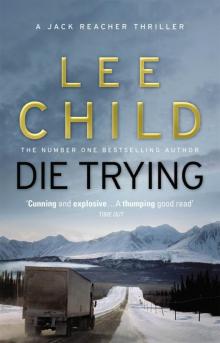 Die Trying
Die Trying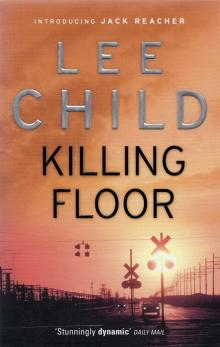 Killing Floor
Killing Floor Persuader
Persuader Tripwire
Tripwire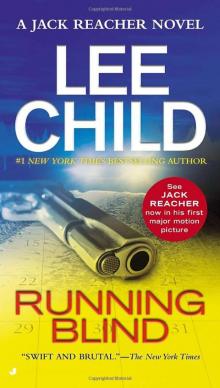 Running Blind
Running Blind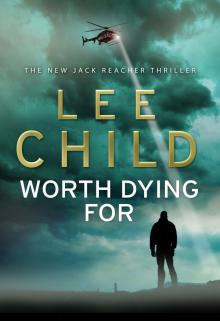 Worth Dying For
Worth Dying For One Shot
One Shot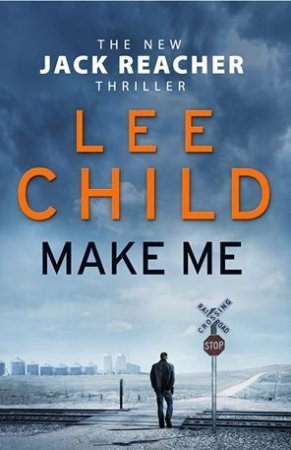 Make Me
Make Me The Midnight Line
The Midnight Line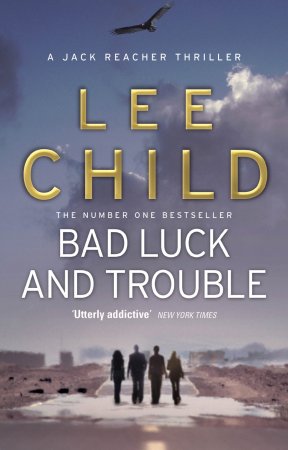 Bad Luck and Trouble
Bad Luck and Trouble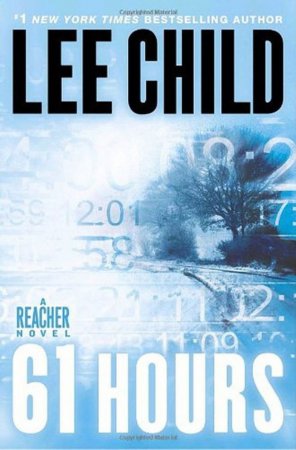 61 Hours
61 Hours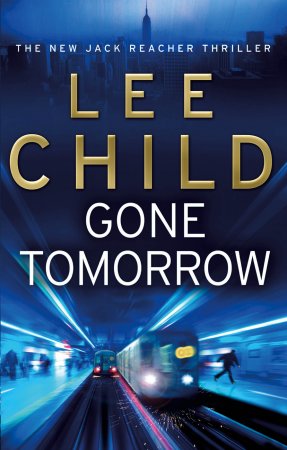 Gone Tomorrow
Gone Tomorrow Night School
Night School Personal
Personal Never Go Back
Never Go Back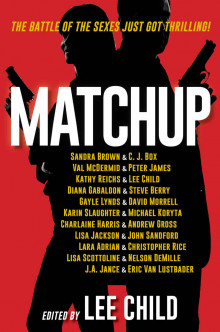 MatchUp
MatchUp A Wanted Man
A Wanted Man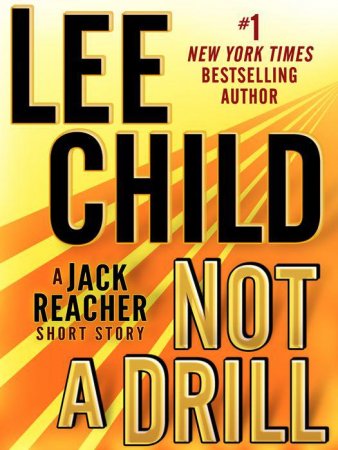 Not a Drill
Not a Drill Echo Burning
Echo Burning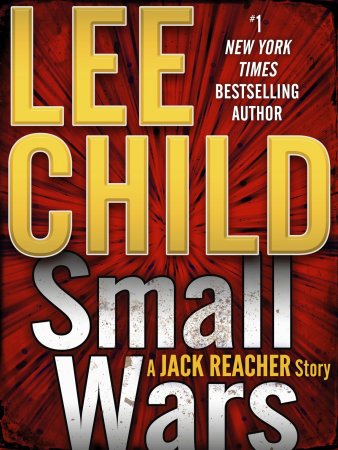 Small Wars
Small Wars Deep Down
Deep Down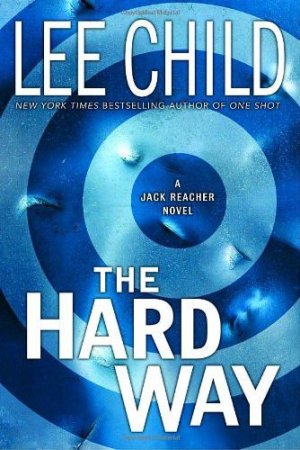 The Hard Way
The Hard Way The Sentinel
The Sentinel The Sentinel (Jack Reacher)
The Sentinel (Jack Reacher) High Heat
High Heat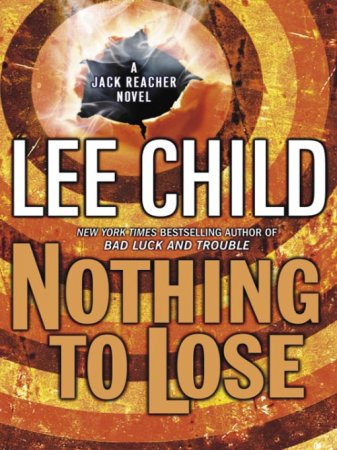 Nothing to Lose
Nothing to Lose The Enemy
The Enemy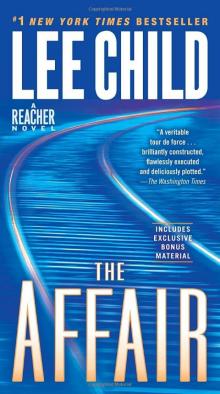 The Affair
The Affair Second Son
Second Son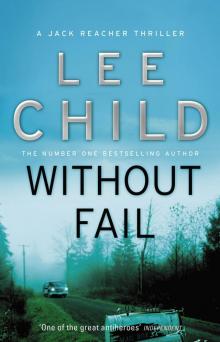 Without Fail
Without Fail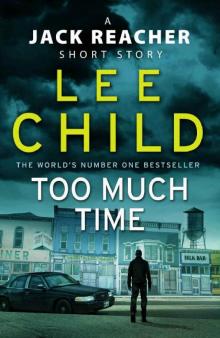 Too Much Time
Too Much Time The Hero
The Hero Blue Moon
Blue Moon The Christmas Scorpion
The Christmas Scorpion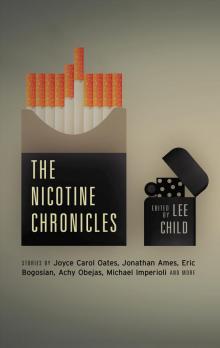 The Nicotine Chronicles
The Nicotine Chronicles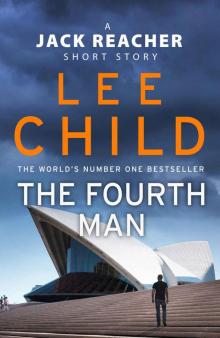 The Fourth Man
The Fourth Man Deep Down_A Jack Reacher short story
Deep Down_A Jack Reacher short story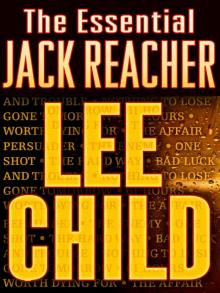 The Essential Jack Reacher 12-Book Bundle
The Essential Jack Reacher 12-Book Bundle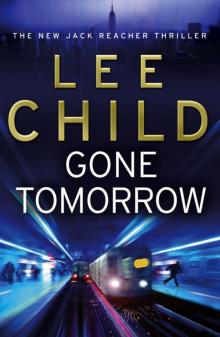 Gone Tomorrow jr-13
Gone Tomorrow jr-13 High Heat: A Jack Reacher Novella (jack reacher)
High Heat: A Jack Reacher Novella (jack reacher) High Heat_A Jack Reacher Novella
High Heat_A Jack Reacher Novella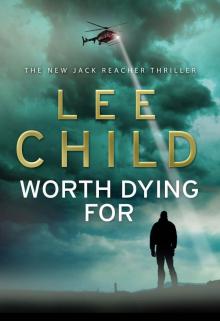 Jack Reacher 15 - Worth Dying For
Jack Reacher 15 - Worth Dying For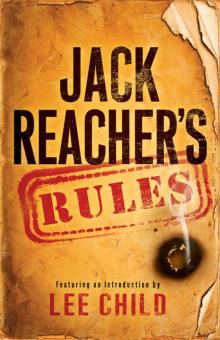 Jack Reacher's Rules
Jack Reacher's Rules No Middle Name
No Middle Name 14 61 Hours
14 61 Hours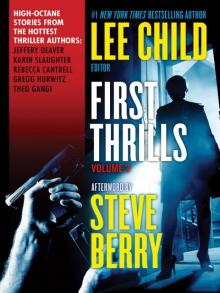 First Thrills, Volume 3
First Thrills, Volume 3 Jack Reacher 01 - Killing Floor
Jack Reacher 01 - Killing Floor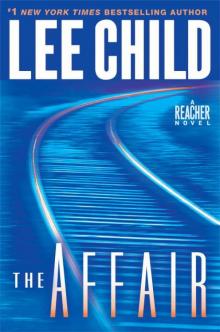 The Affair: A Reacher Novel
The Affair: A Reacher Novel FaceOff
FaceOff Good and Valuable Consideration
Good and Valuable Consideration Mystery Writers of America Presents Vengeance
Mystery Writers of America Presents Vengeance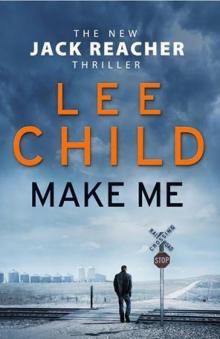 Jack Reacher 20 - Make Me
Jack Reacher 20 - Make Me Not a Drill: A Jack Reacher Short Story
Not a Drill: A Jack Reacher Short Story 17 A Wanted Man
17 A Wanted Man James Penney's New Identity/Guy Walks Into a Bar
James Penney's New Identity/Guy Walks Into a Bar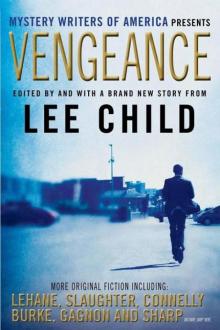 Vengeance: Mystery Writers of America Presents
Vengeance: Mystery Writers of America Presents Lee Child's Jack Reacher Books 1-6
Lee Child's Jack Reacher Books 1-6 Killer Year
Killer Year Personal (Jack Reacher 19)
Personal (Jack Reacher 19)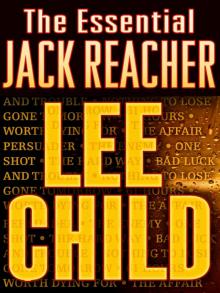 The Essential Jack Reacher 10-Book Bundle
The Essential Jack Reacher 10-Book Bundle First Thrills
First Thrills Echo Burning jr-5
Echo Burning jr-5 Good and Valuable Consideration_Jack Reacher vs. Nick Heller
Good and Valuable Consideration_Jack Reacher vs. Nick Heller A Wanted Man: (Jack Reacher 17)
A Wanted Man: (Jack Reacher 17) 23 Past Tense
23 Past Tense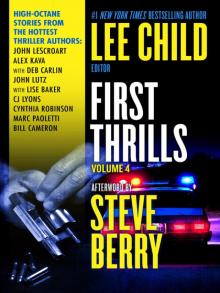 First Thrills, Volume 4
First Thrills, Volume 4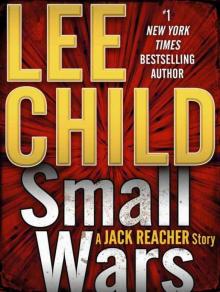 Small Wars_A Jack Reacher Story
Small Wars_A Jack Reacher Story